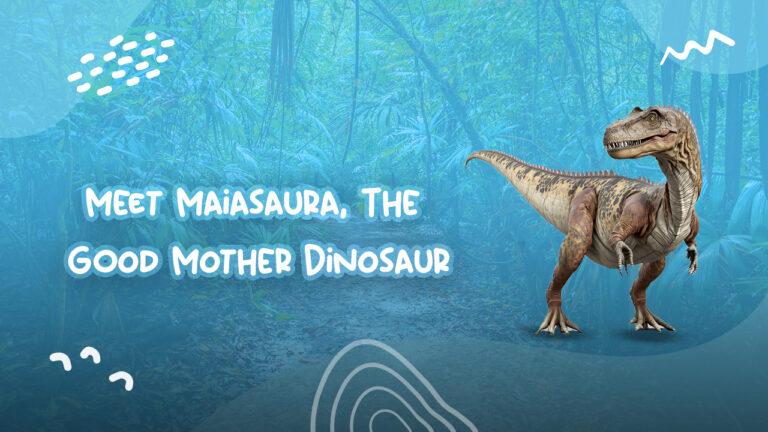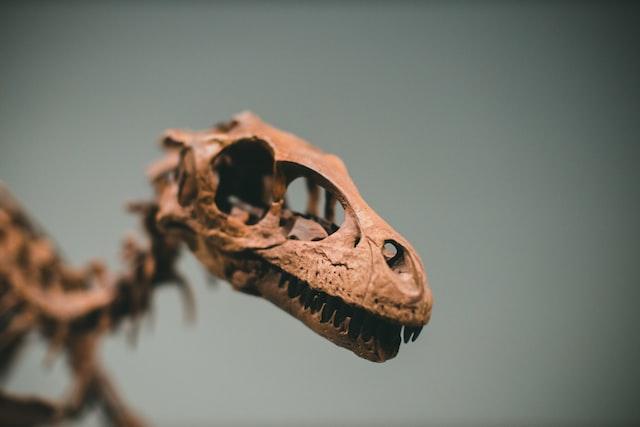Discover Maiasaura, The Good Mother Dinosaur

Dinosaurs are known to be beasts during prehistoric times. But, one dinosaur seemed to be on a different note from being a fearful creature. The Maiasaura dinosaur is known to be the ‘good mother’ dinosaur that baffled paleontologists. In this article, we will discuss the definition of Maiasaura, its discovery, and what we can learn from it.
Maiasaura, The Good Mother Dinosaur
The name Maiasaura means “good mother lizard” in Greek, and was chosen to reflect the discovery of a nesting site with eggs and young Maiasaura.
It is a genus of hadrosaurid dinosaur that lived in what is now North America during the Late Cretaceous period, approximately 75 million years ago. It is one of the most well-known and best-studied dinosaurs of the period, and its discovery has provided us with a wealth of information about the ecology and behavior of dinosaurs during this time.
Why is Maiasaura called the good mother lizard?
The evidence of parental care and social structure is what earned Maiasaura its name, “good mother lizard.” It was the first dinosaur to be discovered with evidence of parental care, and its discovery showed that dinosaurs were capable of complex social behavior. This discovery revolutionized our understanding of dinosaur behavior and has since been used to inform our understanding of other dinosaur species.
Maiasaura Discovery
Maiasaura was first discovered in 1978 by paleontologist Jack Horner in the Two Medicine Formation of Montana. Horner’s discovery was remarkable because it was the first dinosaur to be found with evidence of parental care. He found a nesting site with numerous eggs and juvenile skeletons, indicating that it had been caring for its young. This discovery provided the first evidence that dinosaurs were social animals and that they exhibited parental care.
Since then, it has been the subject of numerous studies, providing us with a wealth of information about the ecology and behavior of dinosaurs during this time. For example, studies of Maiasaura’s bones have revealed that it was a slow-growing, long-lived species, with individuals living up to 30 years.
Maiasaura Characteristics
Maiasaura Size
It was a large, herbivorous dinosaur that measured up to 30 feet in length and weighed up to 4 tons. It had a long, low-slung body with a long tail and short, thick legs. Its head was small and its beak was wide and flat. It had a row of bony plates along its back and tail, and a crest on its head.
It is characterized by its large size, long neck, and broad, flat head. It is also known for its distinctive “duck-billed” snout, which is thought to have been used for grazing on low-lying vegetation.
Behavioral Characteristics
Behaviorally, it was a social animal that lived in large herds. It was also a migratory species, traveling in large groups to different areas in search of food.
Diet and Habitat
It lived in a variety of habitats, including forests, plains, and wetlands. It was a ground-dwelling dinosaur, and its nesting sites were typically located near rivers and lakes.
Studies of its diet have also revealed that it was an herbivore, feeding on low-lying vegetation.
Maiasaura’s Legacy
Significance of Maiasaura’s Discovery
Maiasaura’s discovery in 1978 was a major breakthrough in the field of paleontology. It was the first dinosaur to be found with evidence of parental care, and it provided a wealth of information about the behavior and lifestyle of dinosaurs.
Maiasaura’s discovery was significant because it showed that dinosaurs were not just cold-blooded, solitary creatures, but that they had complex social behaviors and were capable of caring for their young. This discovery changed the way paleontologists viewed dinosaurs and opened up a whole new area of research.
Impact on the Field of Paleontology
The discovery also had a major impact on the field of paleontology. Before Maiasaura, paleontologists had only been able to speculate about the behavior and lifestyle of dinosaurs. With Maiasaura, they were able to study the fossilized remains of a dinosaur that had been caring for its young.
This provided a wealth of information about the social behavior of dinosaurs, and it allowed paleontologists to gain a better understanding of how dinosaurs lived and interacted with each other.
Public Perception of Dinosaurs
Maiasaura’s discovery also had a major impact on the public’s perception of dinosaurs. Before Maiasaura, dinosaurs were often seen as cold-blooded, solitary creatures. Maiasaura’s discovery showed that dinosaurs were capable of caring for their young, and this changed the way the public viewed dinosaurs. It showed that dinosaurs were not just mindless, solitary creatures, but that they had complex social behaviors and were capable of caring for their young.
How did Maiasaura defend itself?
It was a peaceful herbivore that mainly fed on plants and vegetation. It had no natural predators, so it did not need to defend itself. However, it did have a few defensive strategies. It could use its large size and bulk to intimidate predators, and it could also use its long neck and tail to swat away any attackers.
Why did the Maiasaura go extinct?
It went extinct due to a combination of factors. The most likely cause was the changing climate and environment of the Late Cretaceous period. As the climate changed, the vegetation that Maiasaura relied on for food became scarce, and the species was unable to adapt. Additionally, the rise of new predators such as Tyrannosaurus Rex may have also contributed to its extinction.
Conclusion
In conclusion, Maiasaura is one of the most well-known and best-studied dinosaurs of the Late Cretaceous period. Its discovery has provided us with a wealth of information about the ecology and behavior of dinosaurs during this time, including evidence of parental care and a slow-growing, long-lived lifestyle.
It is an important species in the history of paleontology, and its name reflects the fact that it was the first dinosaur to be discovered with evidence of parental care. Its discovery revolutionized our understanding of dinosaur behavior and has since been used to inform our understanding of other dinosaur species.
Dinosaurs are wonderful creatures that always fascinates us, you can find more information about them at Dinosaurzus!

Top posts
related articles
Discover the Awesome Top 10 Longest Dinosaur Names
Dinosaurs, the ancient giants that once roamed the Earth, continue to capture our imagination. While
Discover the Amazing Dinosaur with 500 Teeth
Dinosaurs have always fascinated us with their colossal size, unique features, and intriguing mysteries. One
The Acheroraptor: An Insight into a Tiny but Fierce Dinosaur
The dinosaur world is undoubtedly fascinating, and the relative discovery of the acheroraptor is no
Epic Tale: Cryolophosaurus, Rise of the King
Cryolophosaurus, also known as the ‘Antarctic King’, was a fierce and fascinating dinosaur that existed
Torosaurus: The Horned Dinosaur with a Mysterious Identity
Dinosaurs don’t exist anymore, but their fossils still fascinate us. Paleontologists scour the earth to
Exploring the Wondrous World of Corythosaurus
The world of dinosaurs never stops fantastic us. From the huge T-rex to the tiny


